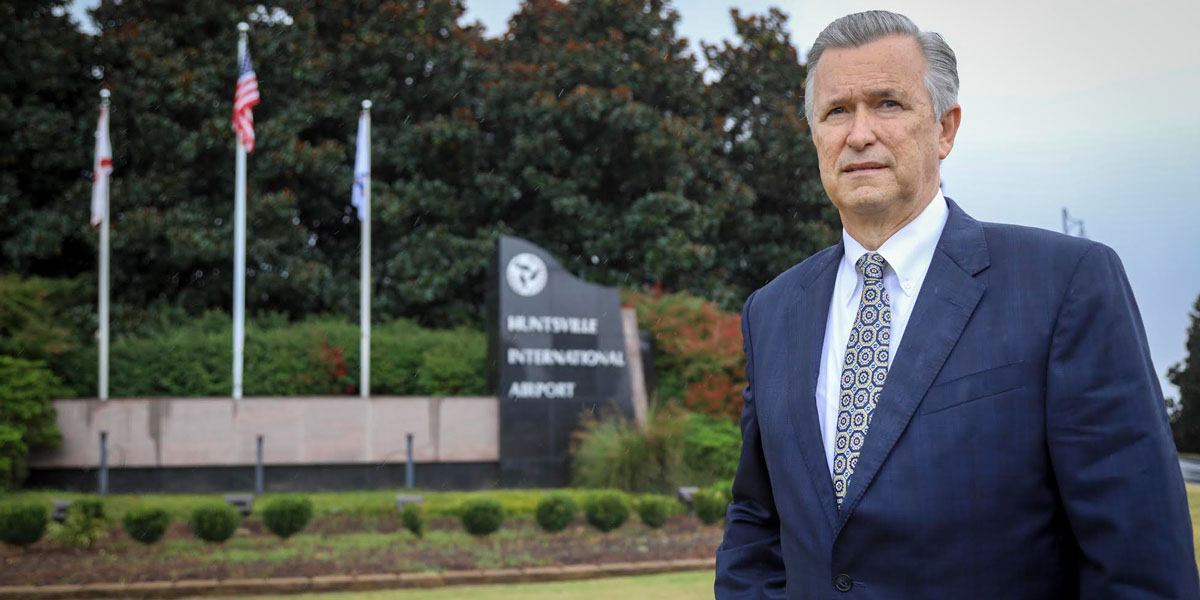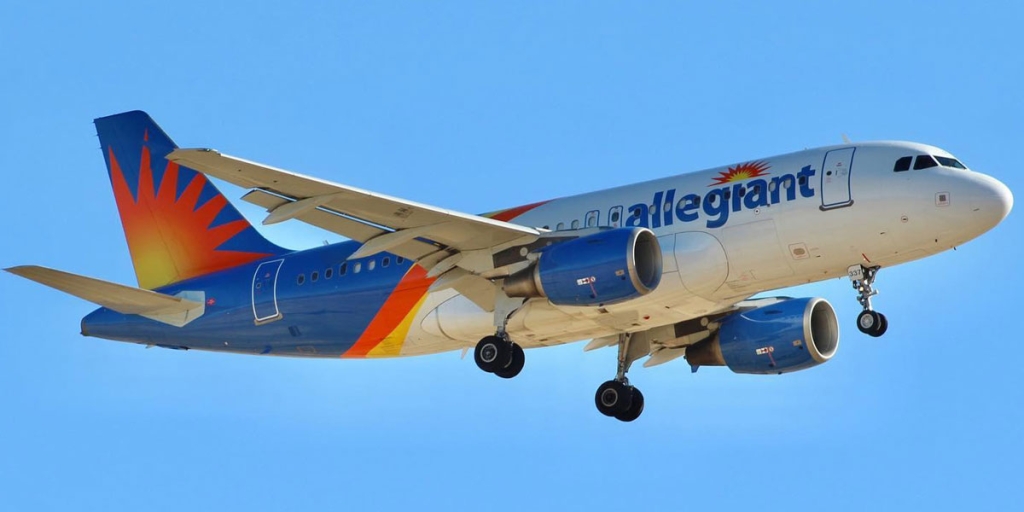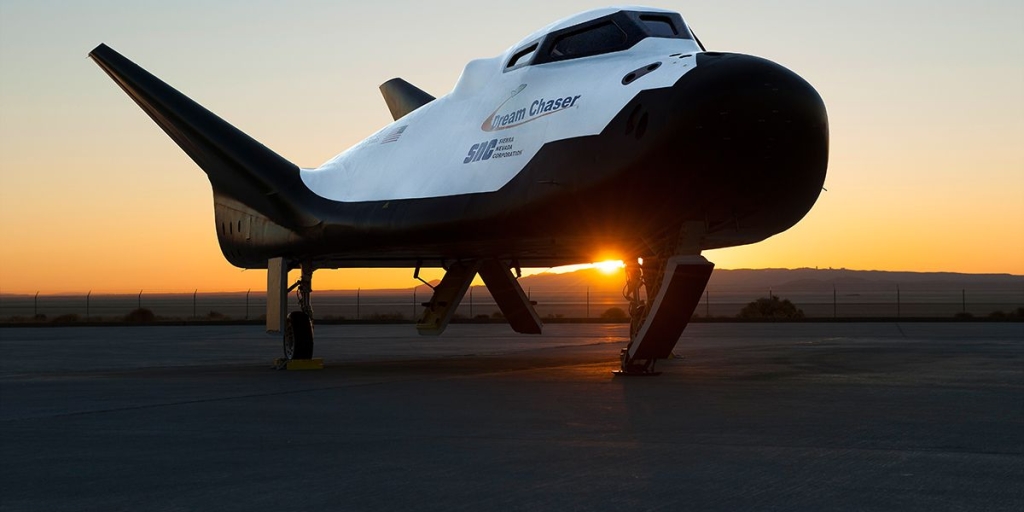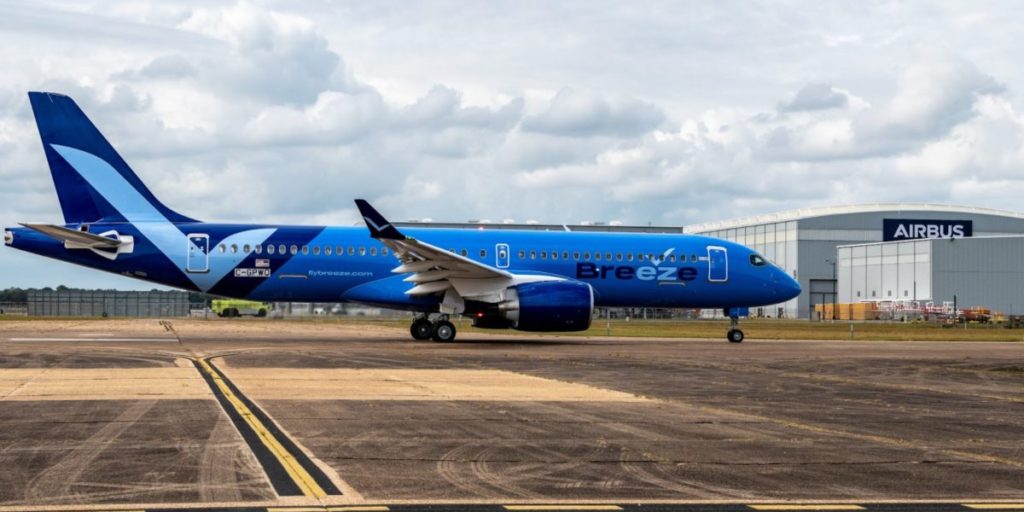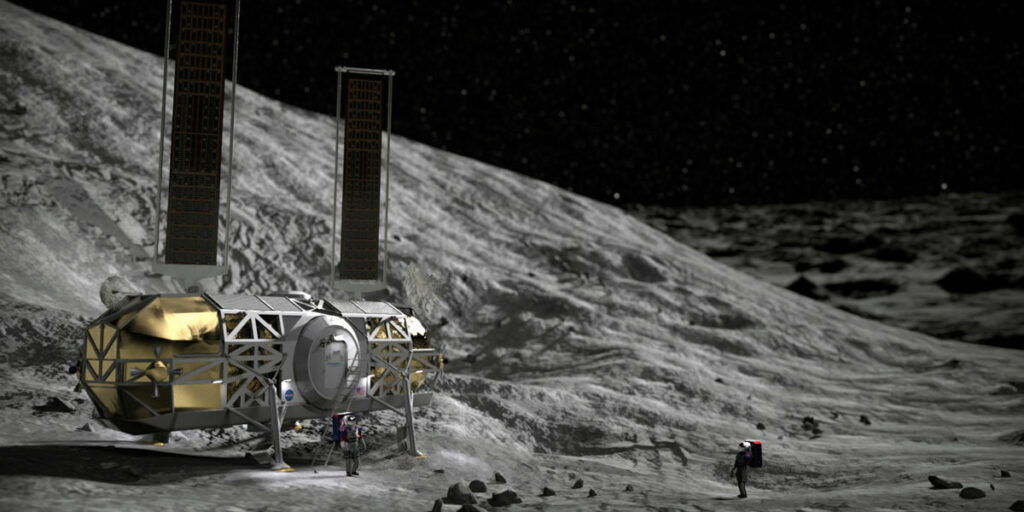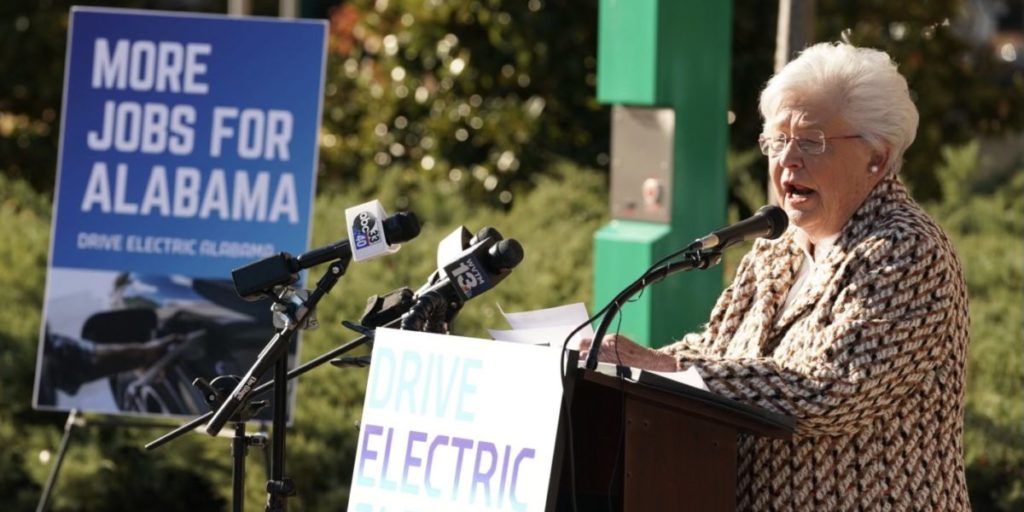Visionary is defined simply as planning for the future with creativity and wisdom. Situated by that definition in the dictionary belongs a photograph of the Huntsville International Airport.
The development of Huntsville’s airport is closely aligned with the community’s vision, spirit, and expectations, and has been a lesson in smart planning.
During those early days of Huntsville’s growth in the 1960s, there were severe constraints on the city’s air traffic. The airport’s runway was squeezed between near Drake Avenue on the north and the south end of the airport property that was approximately situated at Airport Road. Actually, there was a tower of lights in the median of Memorial Parkway that pilots would use for their approach to the runways. Of course, that was before the series of overpasses were built.
Ed Mitchell was the director of the airport in those days. He knew the community was in desperate need to improve air traffic service. After all, Huntsville was in the middle of a population boom during that decade as a result of the Space Age.
Mitchell envisioned the construction of a new airport. However, his concept took some by surprise. He proposed building a new airport west of the city; about halfway between Huntsville and Decatur. It seemed foolish to many because of the distance from downtown Huntsville but Mitchell remained undaunted in his vision.
Move the calendar ahead more than a half century. The Huntsville International Airport is being called a gem in Huntsville’s prosperity. It provides a nexus of modern air traffic for the entire region, and it serves as a center for job creation and economic development. The airport’s infrastructure also helps lure industry to the region through its international cargo operation and multi-modal operation.
Board members of the Huntsville-Madison County Airport Authority are appointed by the city of Huntsville and the Madison County Commission. Commission Chairman Dale Strong gives high praise to the airport’s operation.
“As Madison County’s economy continues to grow, then the airport operation continues to expand its capabilities and enhance its effectiveness,” Strong said. “This is becoming even more important as the region’s economy becomes more intertwined with corporations around the world. The airport is making it more attractive in doing business in Huntsville-Madison County.”
Strong added, “Mazda Toyota and their supplier network are the latest examples of global commerce that is creating more high-quality jobs for people all across north Alabama, from Lauderdale County to Jackson County and those counties in between – Limestone, Morgan and Madison.”
While the COVID pandemic has provided a devastating impact on Huntsville’s passenger traffic, it has given the airport a chance to catch its breath. The number of people flying in and out of the airport set records in 2019, and the first two months of 2020 had the airport on pace for another record year.
Passenger traffic tanked in Huntsville as it did all across the country. Traffic is beginning to experience a resumption in numbers. Meanwhile, the Huntsville International Airport has just completed a comprehensive master plan to guide the development of the airport for the next 20 years. This time, the future is being led by director Rick Tucker.
The new vision by Tucker and his team shows confidence and optimism for the future.
The airport is situated today on 7,800 acres of land and can provide plenty of growth for passenger traffic. However, Tucker said future land acquisition remains in the works. Some 3,500 acres have been identified west of the airport that could be a part of the airport’s long-term operations. He said 2,000 of that area has already been purchased. When the acquisition process is complete, the Huntsville-Madison County Airport Authority should be sitting on approximately 10,000 acres.
Tucker said th additional acreage would provide a land mass larger than Atlanta’s Hartsfield Airport, the busiest airport in the world. The new master plan calls for the construction of five runways, but Tucker quickly notes that five runways won’t be needed in his lifetime.
An illustration Tucker uses for passenger traffic numbers is the comparison between Huntsville and Myrtle Beach, S.C. That airport handles 10,000 passengers a day through 14 gates. While the Huntsville International Airport has a similar number of gates, daily traffic here is about 2,000 passengers each day. That shows how much more capacity that currently exists here. Plus, the Huntsville airport has the capability to grow to 40 gates under the current master plan.
Presently, Tucker points out that the airport is experiencing “significant” growth in air cargo. He believes that cargo traffic will continue aggressive growth. Panalpina was acquired by DSV, a global leader in transports and logistics, and a second logistics company, Kerry Logistics, started operating in September.
“We’re doing more flights from Asia, and we have been working closely with Mazda Toyota since their announcement as well as their suppliers,” he said. “We’re full so we are looking at design-build concepts. We have property with ramp access so we’re moving forward with development for air cargo expansion.”
Tucker points out that Huntsville International is currently ranked 18th among the nation’s top airports for international cargo, ahead of Detroit and Columbus, Ohio. The resumption of international cargo growth gives Tucker the confidence that Huntsville will be moving up the rankings soon.
Similar growth prospects exist for the Jetplex Industrial Park. “We had anticipated additional growth in warehousing and distribution,” Tucker said. The master plan had projected 383,000 square feet of warehousing and distribution by 2022. This year, 381,000 square feet of space is finished, according to Tucker.
But all of this is the here and now. Tucker said the airport continues to look ahead to a more galactic future. The Huntsville International Airport is on schedule to file for federal approval by the end of the year to become the first commercial airport in the world licensed to land incoming spacecraft.
Tucker laughs when the suggestion was made at changing the name of the Huntsville International Airport to the Huntsville Interplanetary Airport. But Tucker is working with the Dream Chaser vehicle, and Sierra Space, a spinoff company formed this year by parent company Sierra Nevada Corp. to make this a reality.
An environmental assessment has been completed and the airport authority hopes to file for a Federal Aviation Administration Reentry Site Operator License. The FAA will have 180 days to approve or reject the application.
The proposed re-entry site is the airport’s eastern runway that has a length of 10,001 feet. Dream Chaser will be able to land “anywhere that has a suitable 10,000 ft. runway capable of handling a typical large passenger airplane,” Sierra Space says. The airport also has a second, longer runway that is 12,600 feet long, the second-longest runway in the southeastern United States.
Sierra Space is “developing the Dream Chaser, a reusable reentry vehicle capable of carrying payloads to and from low Earth orbit, including delivering supplies to the International Space Station,” the FAA said.
Sierra Space plans to land its Dream Chaser spacecraft at least once at the Huntsville airport. The first flight of its small, space shuttle-looking spacecraft is expected in 2022. All these dates were pushed back by the pandemic.
There are space ports around the country including some that can launch and land spacecraft. Huntsville International Airport would be the only commercial airport that can serve as a landing site, Tucker said. If it can secure the license, Tucker said the airport would then pursue a mission with Sierra Space.
Dream Chaser could also be a useful tool for The University of Alabama in Huntsville. UAH has flown science experiments in space for decades, and UAH officials are excited about the possibilities that the faculty and students can use Dream Chaser as a science platform.
The Sierra Space spacecraft would launch into space atop United Launch Alliance’s Atlas V rocket. ULA builds its rockets in nearby Decatur.
The Dream Chaser’s destination on the planet could be listed on manifests and cargo as HSV, a fitting tribute to the Rocket City, the forward-thinking Huntsville-Madison County Airport Authority Board, director Rick Tucker and a team of professionals at the Huntsville International Airport.
Ray Garner is a contributing writer to Yellowhammer News.




